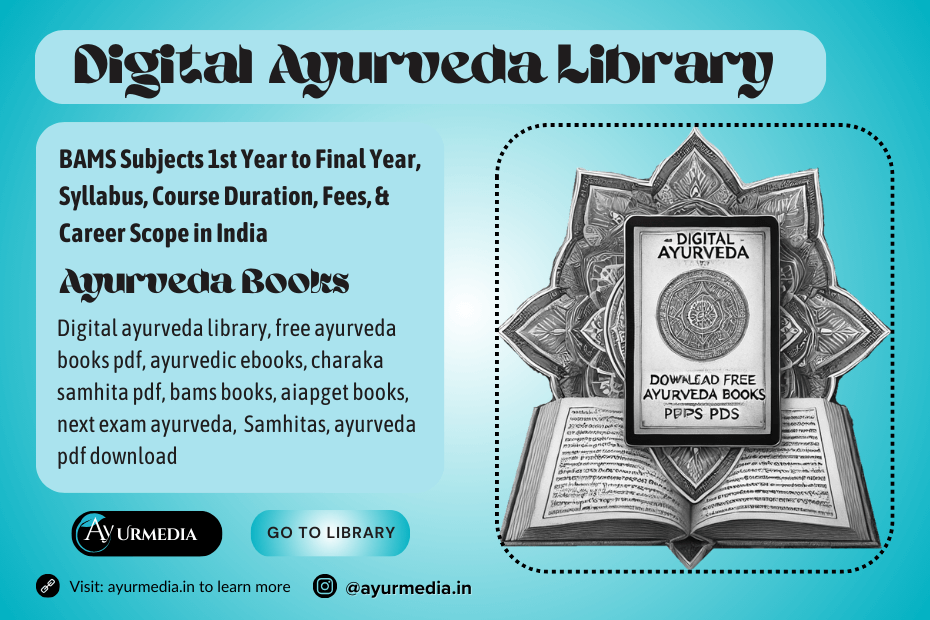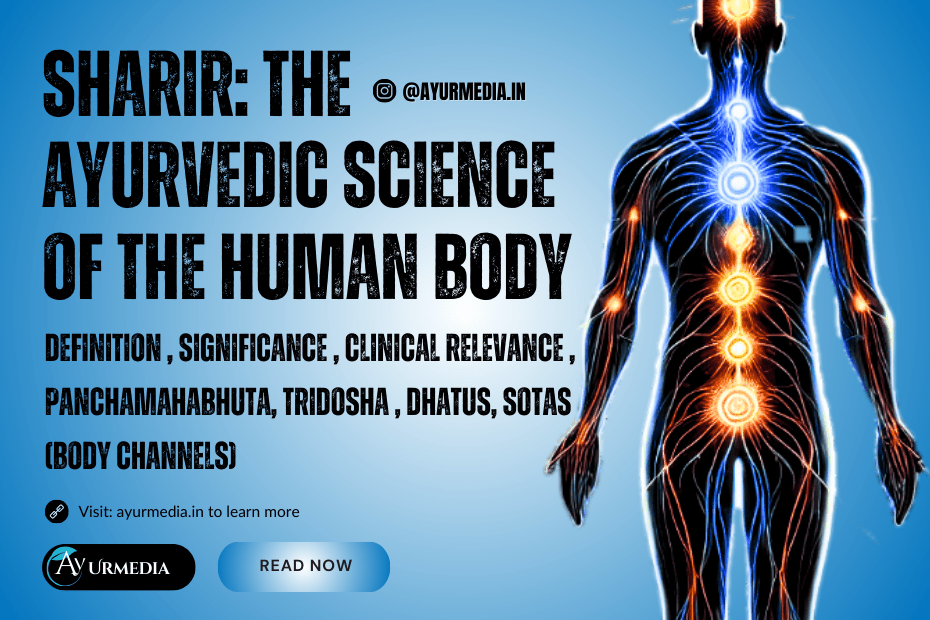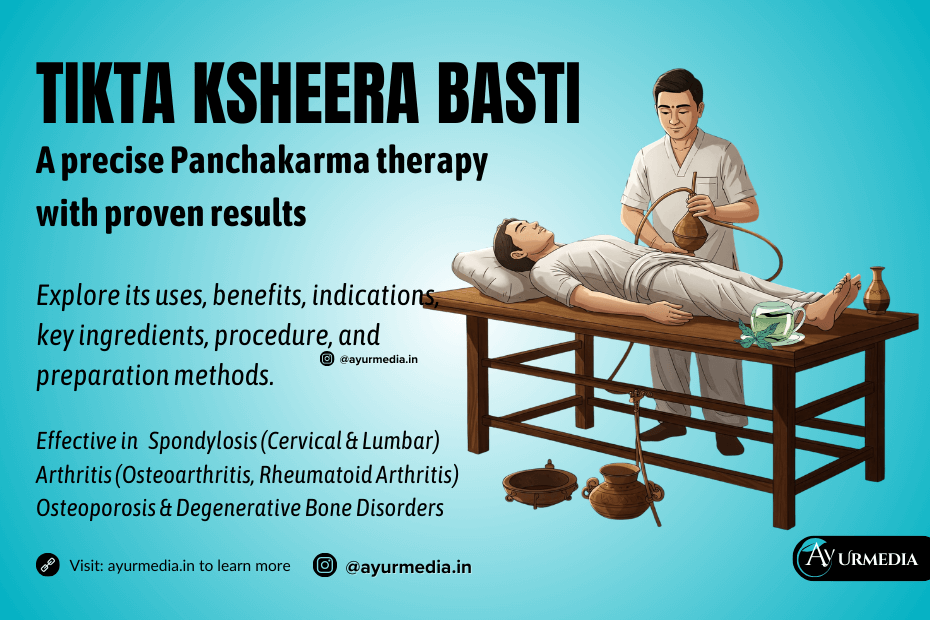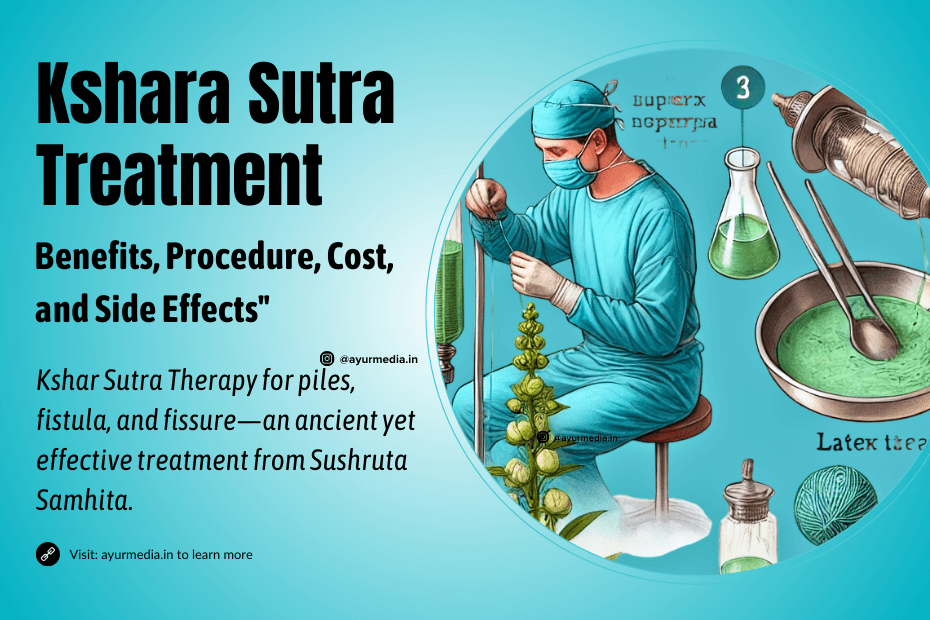“Hitaahitam sukham duhkham aayus tasya hitahitam | Maanam cha taccha yatroktam aayurveda sa uchyate ||” (Charaka Samhita, Sutra Sthana 1.41)
“Ayurveda is the science that defines life in terms of what is beneficial and harmful (Hitaahitam), what brings happiness and sorrow (Sukhan Dukham), and the measurement of life itself (Manam Cha).”
Ayurveda, the timeless science of life, holds the key to balanced health and longevity. Rooted in the sacred teachings of the Vedas, Ayurveda has been preserved and transmitted through ancient scriptures with the Guru-shishya tradition (Guru-disciple system), including the Charaka Samhita, Sushruta Samhita, and Ashtanga Hridaya.
These texts not only describe the nature of health and disease but also provide detailed insights into herbal medicine, surgical practices, disease prevention, and rejuvenation therapies. Ayurveda is more than just a medical system—it’s a way of understanding health, disease, and the connection between mind, body, and spirit.
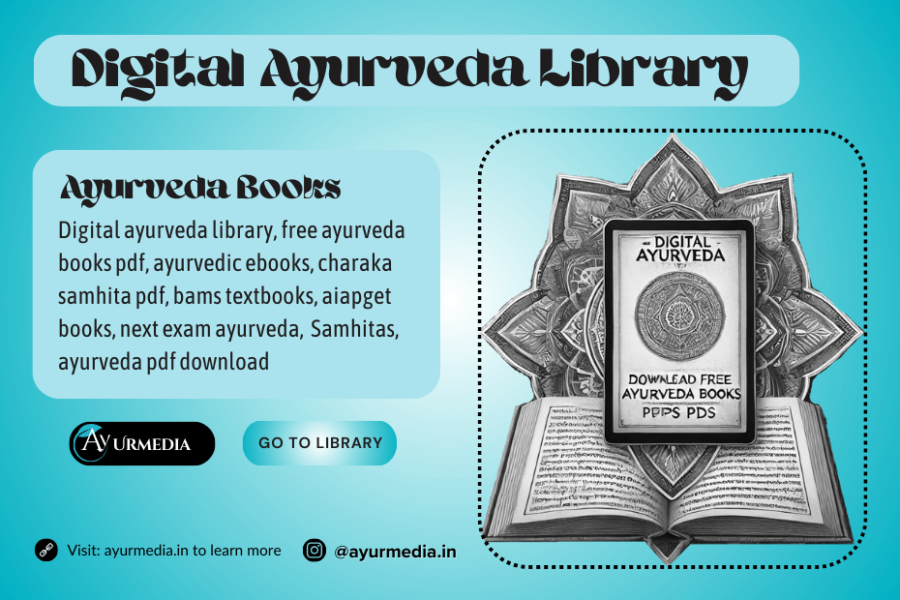
We have Curated The Digital Ayurveda Library, which provides an invaluable resource for studying Ayurveda. This includes BAMS textbooks (from 1st to final year) and Ayurvedic Samhitas, AIAPGET, NTET, and NEXT Preparation Books.
Before practicing Ayurveda, it is important to understand the core Ayurvedic concept. Bachelor of Ayurvedic Medicine and Surgery (BAMS) is a complete program that includes various BAMS subjects essential to understanding and practicing Ayurveda.
BAMS Course
BAMS (Bachelor of Ayurvedic Medicine and Surgery) is a 5.5-year undergraduate degree in Ayurveda, combining traditional Ayurvedic knowledge with modern medical science. The course includes three professional years (1.5 years each) covering BAMS subjects like Rachana Sharir (Anatomy), Kayachikitsa (Internal Medicine), and Panchakarma (Therapeutics), followed by a one-year internship. Admission is based on NEET scores. After graduation, students can practice as Ayurvedic doctors, pursue MD (Ayurveda), or work in healthcare, research, or wellness sectors.
This guide will help you navigate the key topics covered in each year, from foundational Ayurvedic principles to advanced clinical practices. We’ll explore each subject in detail later in the article, ensuring you have a clear understanding of what to expect at every stage of the BAMS journey.
BAMS course fees
BAMS fees vary depending on the institution. Government colleges typically charge around ₹20,000 to ₹50,000 annually, while private colleges may charge between ₹2 lakhs to ₹5 lakhs per year.
BAMS course duration
The BAMS course is a 5.5-year program, including 4.5 years of academic study divided into three professional phases of 1.5 years each, followed by a one-year mandatory internship.
BAMS syllabus
The BAMS syllabus includes classical Ayurvedic texts and modern medical sciences, covering anatomy, physiology, pharmacology, pathology, internal medicine, and therapeutic procedures. A detailed syllabus can be accessed from the NCISM UG New Syllabus and NCISM UG Old Syllabus.
BAMS subject list
Here’s a complete list of BAMS subjects and BAMS books from the first year to the final year and with links to the Digital Ayurveda Library for study material. We’ll discuss each subject in detail in the article, ensuring you have a clear understanding of what to expect at every stage of the BAMS.
BAMS 1st year subjects
First year BAMS subjects comprise of five essential subjects, including the integration of modern subjects
Padartha Vigyan (Fundamental Principles of Ayurveda and Quantum Mechanics)
“Sarvam dravyam panchabhautikam” – All substances are composed of five elements.
Padartha Vijnana deals with the fundamental principles of Ayurveda, the philosophical concepts of the universe (Pancha Mahabhuta), focusing on the nature of substances, their interactions with the human body, and their role in health and disease. It is considered the essential subject for BAMS students to learn the core concepts of Ayurveda.
It integrates philosophical insights from various schools of thought (Darshanas), the concept of Pramana (Epistemology), providing a deep understanding of the body’s connection with its environment. This knowledge forms the foundation for Ayurvedic anatomy, physiology, and therapeutic practices, making it essential for BAMS students.
Rachana Sharir (Human Anatomy)
Rachana Sharir (Anatomy) focuses on the structural aspects of the human body from an Ayurvedic perspective. It explores the detailed composition of the body, including bones, muscles, tissues, organs, and vital channels (Srotas), while also integrating the concept of Panchamahabhuta (the five elements) and Tridosha (Vata, Pitta, Kapha).
Rachana Sharir not only focuses on physical structures but also considers the subtle energy channels and their influence on health and disease.
In addition to Ayurvedic anatomy, it also includes the study of modern anatomy as a complementary part, helping students understand the body’s structure and function through both traditional and scientific views.
Kriya Sharir (Human Physiology)
Kriya Sharir (Physiology) is the study of the human body’s functioning from both Ayurvedic and modern perspectives. It explains how the body’s systems work together, focusing on Ayurvedic concepts like Panchamahabhuta (five elements), Tridosha (Vata, Pitta, Kapha), Dhatus (tissues), Malas (waste), and Agni (digestive fire).
In addition to Ayurvedic physiology, it also includes the study of modern physiology as a complementary part, helping students understand the body’s functions through both traditional and scientific lenses. This integrated method helps BAMS students gain a deeper knowledge of human physiology
Sanskrit and Ayurved Itihas
Sanskrit forms the foundation of Ayurvedic Samhitas, making it essential for understanding the original scriptures like Charaka Samhita, Sushruta Samhita, and Ashtanga Hridaya, which are written in Sanskrit. It helps students grasp and interpret Ayurvedic verses accurately by building a strong foundation in grammar and vocabulary.
This deepens their understanding of traditional knowledge. Mastering Sanskrit allows BAMS students to explore Ayurvedic teachings in their purest form. Similarly, Ayurveda Itihasa outlines the historical evolution of Ayurveda, offering insight into its ancient roots and the progression of its practices over time.
Understanding this history allows learners to connect with the Ayurveda Wisdom and apply it effectively in modern health care practice.
Samhita Adhyayan 1
Samhita Adhyayan 1 focuses on studying classical Ayurvedic Samhitas, especially the Ashtanga Hridaya (Sutrasthana 1–15) and Charaka Samhita (Sutrasthana 1–12). It teaches students how to interpret and apply Ayurvedic sutras using tools like Tantrayukti and covers key concepts such as Tridosha, Saptadhatu, Mala, Agni, and treatment methods (Chikitsa).
The course also includes practical training in daily and seasonal regimens (Dincharya, Ritucharya) and dietary principles, helping students integrate Ayurvedic knowledge into clinical practice.
BAMS 2nd year subjects
Second Year BAMS Subjects comprise of six essential subjects, including the integration of modern subjects
Rasashastra evam Bhaishajyakalpana (Pharmaceutical Sciences)
Rasashastra evam Bhaishajyakalpana focuses on Aushadhi Nirmana (Ayurvedic pharmaceutics), teaching the preparation and processing of herbal, mineral, and metallic medicines. It covers key concepts like Rasa (metals and minerals), Bhasma (calcined preparations), Kupipakwa (processed formulations), and Parpati (layered medicines).
This BAMS Subject also covers purification (Shodhana), incineration (Marana), and standardization methods to ensure safety and efficacy. It also includes modern pharmaceutical principles.
Agad Tantra evam Vidhi Vaidyaka
Agad Tantra evam Vidhi Vaidyaka focuses on Ayurvedic toxicology and forensic medicine. It covers the identification and management of poisons—including Sthavara Visha (inanimate poisons), Jangama Visha (animate poison), and Kritrima (artificial poison )—as well as treatment approaches such as Chaturvimshati Upakrama (24 therapeutic measures) and medico-legal duties.
This BAMS subject also delves into Dushivisha (latent poisons), Garavisha (concocted poison), and Viruddha Ahara (incompatible food). It equips students to apply Ayurvedic principles to modern toxicological challenges and engage in forensic cases with professionalism and ethical integrity.
Samhita Adhyayan-2
Samhita Adhyayan-2 focuses on the study of Charaka Samhita, covering Sutrasthana (13–30), Nidanasthana, Vimanasthana, Shareerasthana, and Indriyasthana. It teaches students to interpret Ayurvedic Samhitas using Tantrayukti and Vyakhyana, understand clinical principles, and apply diagnostic and treatment guidelines.
The subject emphasizes understanding health determinants, therapeutic approaches, and ethical conduct in clinical practice.
Dravyaguna Vigyan (Pharmacology)
Dravyaguna Vigyan focuses on Ayurvedic pharmacology, covering the properties, classification, and therapeutic applications of medicinal plants and substances. It explores key principles such as Rasa Panchaka, which includes Rasa (taste), Guna (quality), Veerys (potency), Vipaka (post-digestive effect), Prabhava (overall effect) and Karma (pharmacological action).
The subject also includes practical training in plant identification, cultivation, and sustainable usage, with a strong emphasis on quality control and pharmacovigilance.
Roga Nidan evam Vikriti Vigyan
Roga Nidan evam Vikriti Vigyan focuses on Ayurvedic pathology and diagnostics principles, which helps students identify diseases based on Nidan Panchaka (five fundamental components of Ayurvedic diagnosis), Tridosha, Agni, Dhatu, and Mala principles.
It covers clinical examination methods (Pareeksha), differential diagnosis (Vyavacchedaka Nidana), and diagnostic reasoning (Naidanika Tarka).
The subject integrates modern diagnostic tools and laboratory investigations, enhancing the ability to assess prognosis (Sadhya-Asadhyata) and follow advancements in diagnosis (Vyadhi Vinischaya). It helps students apply Ayurvedic and modern principles in clinical practice.
Swasthavritta evam Yoga
Swasthavritta evam Yoga covers preventive healthcare and lifestyle management based on Ayurvedic principles. It covers Dinacharya (daily regimen), Ritucharya (seasonal regimen), Sadvritta (ethical lifestyle), and Rasayana (rejuvenation).
The course includes yoga and naturopathy, highlighting their role in health promotion and disease prevention. It also teaches community health, environmental health, and epidemiology, preparing students to assess health status and implement preventive measures at individual and community levels.
BAMS final year subjects
Final Year BAMS subjects comprise of nine essential subjects, including the integration of modern subjects
Kayachikitsa
Kayachikitsa focuses on the diagnosis and treatment of adult diseases based on Ayurvedic principles including the Trisutra concept (cause, symptom, and treatment).
It covers disease classification such as Prameha Chikitsa (Diabetes management), clinical examination, and therapeutic approaches involving Shamana (palliative), Shodhana (purification), Rasayana (rejuvenation) and Vajikarana (aphrodisiac) therapies.
The course integrates modern diagnostic methods, emphasizes ethical practice, patient communication, and evidence-based clinical decision-making.
Panchakarma & Upakarma (Therapeutic Procedural Management)
Panchakarma evam Upakarma teaches the principles and practice of Ayurvedic detoxification and therapeutic procedures. It covers the theory and practice of Purva Karma (preparatory measures), Pradhana Karma (main procedures like Vamana, Virechana, Basti Karma, Nasya Karma, and Raktamokshana), and Paschat Karma (post-procedural care).
Students learn to select appropriate drugs, instruments, and techniques, analyze clinical applications, and manage complications.
Shalya Tantra (General Surgery)
Shalya Tantra focuses on Ayurvedic surgery, integrating classical techniques from Sushruta Samhita with modern surgical practices. It covers surgical anatomy, diagnosis, trauma management, pre- and post-operative care, and therapeutic procedures like Kshara Sutra treatment, Ashtavidha Shastra Karma (eight surgical methods).
The course includes training in sterilization, anesthesia, wound care, and handling surgical emergencies. Students learn parasurgical techniques, emergency handling, and ethical clinical practice.
Shalakya Tantra (Ophthalmology, Oto-Rhino-Laryngology & Oro-Dentistry)
Shalakya Tantra focuses on the Ayurvedic diagnosis and management of diseases related to the eyes (Netra), ears (Karna), nose (Nasa), mouth (Mukha), and head (Shiras). It covers disease identification (Nidana Panchaka), clinical examination, and treatment procedures such as Kriyakalpa.
Students develop skills in prognosis assessment (Sadhya-Asadhyata), clinical reasoning (Naidanika Tarka), and the ability to implement appropriate therapeutic interventions related to Shalakyatantra as well as judgement to refer patient for expert opinion when necessary.
Prasuti Tantra evam Stree Roga (Gynecology and Obstetrics)
Prasuti Tantra evam Stree Roga focuses on Ayurvedic and modern approaches to gynecology and obstetrics. It covers the anatomy, physiology, and neuroendocrinology of reproduction, antenatal care (Garbhini Paricharya), and pregnancy outcomes (Shreyasi Praja) and postnatal care (Sutika Paricharya).
Students learn to diagnose and treat menstrual disorders (Artava Vyapad), infertility (Vandhyatva), and postpartum complications (Sutika Vyapad).
Kaumarabhritya (Pediatrics)
Kaumarabhritya deals with the Ayurvedic and modern pediatric care, covering child growth, development, diseases (Bala Roga) and Ayurvedic Vaccination such as Suvarna Prashan.
It covers newborn care (Navajata Shishu Paricharya), breastfeeding (Stanya Vijnana), and management of childhood disorders (Bala Roga).
Students learn to diagnose and treat childhood conditions, apply Panchakarma in pediatrics, and prescribe dietary and lifestyle recommendations based on the child’s age and constitution.
Samhita Adhyayan-3
Samhita Adhyayan-3 deepens the understanding of Ayurvedic classical texts, focusing on their structure, interpretation, and clinical relevance. It involves decoding methods like Tantrayukti and Vyakhya to understand treatment principles, including Rasayana and Vajikarana.
Students learn to apply sutras in clinical practice and evaluate therapeutic outcomes.
Research Methodology & Medical Statistics
Research Methodology and Medical Statistics in BAMS guides students in the principles of research and data analysis within Ayurveda. It covers research types, study designs, statistical methods, and research ethics, enabling students to critically evaluate Ayurvedic practices and integrate them with modern healthcare.
Students gain skills in hypothesis formulation, data collection, interpretation, and scientific reporting. Understanding intellectual property rights and guidelines for research publication strengthens their ability to contribute to evidence-based Ayurveda.
Atyaikachikitsa (Emergency Medicine)
Atyaikachikitsa (Emergency Medicine) in BAMS equips students with the skills to manage acute and life-threatening conditions using Ayurvedic and modern medical approaches. It covers identifying emergencies like hyperpyrexia, hemorrhage, and abdominal pain, and managing them with Ayurvedic treatments like Basti, Agnikarma, and Parisheka alongside modern techniques.
Students learn emergency triage, create treatment protocols using Yukti and Chikitsa Sutra. Students develop clinical skills for handling emergencies and complex conditions.
The BAMS curriculum covers a wide range of subjects, integrating Ayurvedic principles with modern medical knowledge. Understanding the structure and relevance of each subject helps students develop strong clinical skills, ethical values, and professional communication. Whether you’re exploring BAMS Subjects, BAMS books, course fees, duration, or career prospects, this comprehensive guide provides a clear path to mastering Ayurveda.
